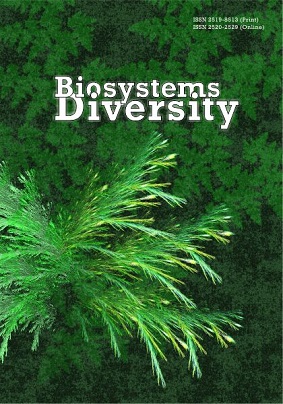Биомаркеры нарушений метаболизма двустворчатых моллюсков в условиях загрязнения среды обитания продуктами переработки нефти
Biomarkers of metabolism disturbance in bivalve molluscs induced by environmental pollution with processed by-products of oil
Author(s): S. V. Kyrychenko, V.S. Nedzvetsky, E. V. SukharenkoSubject(s): Sociobiology, Environmental interactions
Published by: Дніпропетровський національний університет імені Олеся Гончара
Keywords: bivalve mollusks; oil products; oxidative stress; antioxidant enzime activity;
Summary/Abstract: Processed by-products of oil are the most common pollutants in all river and sea water. The increase in oxidative stress in bivalve molluscs was studied in both tissues of the hepatopancreas and the gill. The model for artificial treatment with processed by-products of oil was performed in a laboratory experiment with the river mollusc Dreissena polymorpha Pallas, 1771. The exposure of the molluscs over 28 days to mazut 50 mg/l induced significant increase of both final product of lipid peroxidation (LPO) and antioxidant enzime activity. A significant increase in LPO was observed in the hepatopancreas and gill of D. polymorpha treated with mazut compared to the control group. Antioxidant enzyme activity of cartalase, supeoxide dismutase, glutatione reductase and glutatione-S-transferase showed a greater increase (by almost 1.5 times) in the hepatopancreas than in the gill of D. polymorpha. A similar LPO growth and modulation of antioxidant enzyme activity were determined in the hepatopancreas and gill of the mussel Mytilus galloprovincialis Lamarck, 1879 collected in an area polluted with resins, hydrocarbons and asphaltenes, Donuzlav lake in the Kerch gulf. Varied cellular reactivation of the antioxidant enzyme system in the hepatopancreas rather than the gill was observed in both kinds of mollusc Dreissena and Mytilus. The obtained results are evidence of the higher sensitivity of the hepatopancreas cells of bivalve molluscs to organic pollutants compared to the gill cells.
Journal: Biosystems Diversity
- Issue Year: 25/2017
- Issue No: 2
- Page Range: 113-118
- Page Count: 6
- Language: Russian

